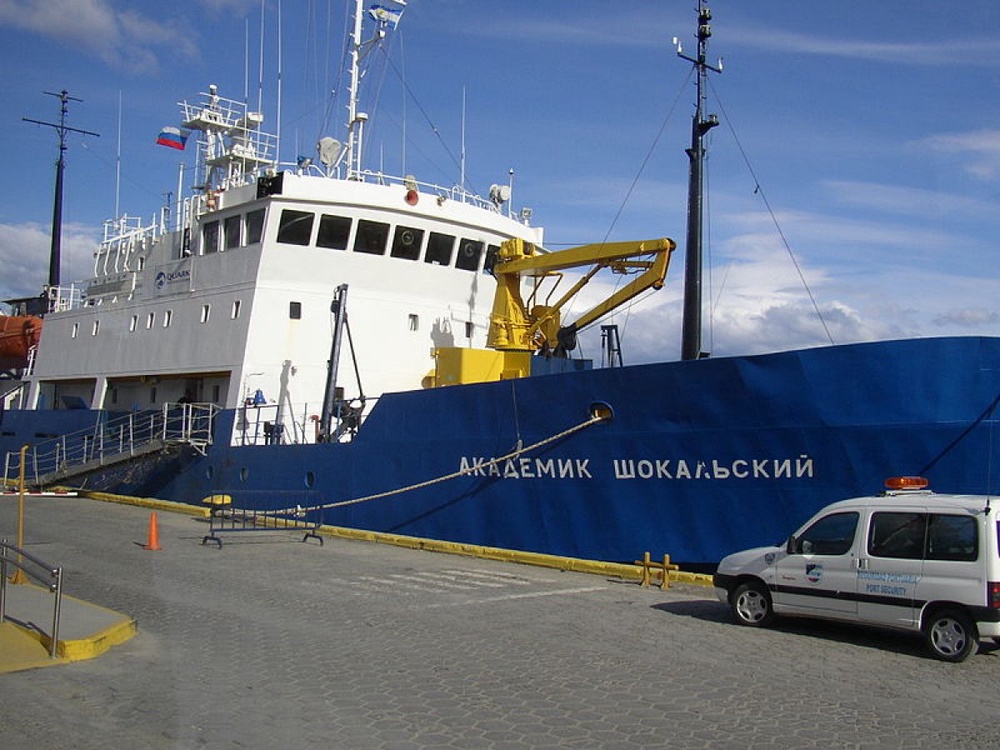
Scientists whose Antarctic expedition became trapped in sea ice finally returned to dry land Wednesday, apologising for the disruption and facing questions over who will pay for the international rescue mission, AFP reports. The scientists were among the 52 passengers plucked by helicopter from their stranded Russian ship, the Akademik Shokalskiy, on January 2 after Chinese and Australian icebreakers failed to cut through the ice to rescue them. A helicopter from the Chinese ship transferred them to the Australian ship the Aurora Australis, which docked in Hobart on Wednesday. The rescue, estimated to have cost up to Aus$2.4 million (US$2.1 million), prompted harsh criticism from some quarters because it diverted resources from other scientific programmes in Antarctica's Southern Hemisphere summer. Expedition leader Chris Turney said the attempted rescue -- which included French, Chinese and Australian ships -- had been a great example of the international cooperation possible in the remote and inhospitable Antarctic. "We are terribly sorry for any impact that might have had on fellow colleagues, whose work has been delayed from the operation, but any experienced Antarctic scientist knows that's an inherent risk," he told reporters. "We hope they are going to have a good season to hopefully catch up on their work." Turney, an academic at the University of New South Wales in Sydney, said many Antarctic missions became beset by ice. In the case of his expedition, it was a matter of being in the wrong place at the wrong time. "The fundamental problem was there was obviously a massive upheaval of movement of sea ice from another part of Antarctica... we hadn't seen that in any of the satellite imagery before and it caught us," Turney said. "We were unfortunately in the wrong place at the wrong time." The Shokalskiy became stuck near Commonwealth Bay, about 100 nautical miles east of the French base Dumont d'Urville, on December 24 and endured a fierce blizzard soon afterwards. The rescue mission was beset by extreme conditions from the start, with the Chinese icebreaker Xue Long and Aurora Australis both unable to break through the ice to free the stranded Russian ship. The Xue Long then itself became stuck in ice after safely helicoptering the Russian ship's passengers to safety. Both it and the Shokalskiy, which had been left with their crew onboard, eventually freed themselves. Turney and his fellow passengers had been following in the footsteps of Australian Sir Douglas Mawson and his 1911-1914 expedition.





Scientists whose Antarctic expedition became trapped in sea ice finally returned to dry land Wednesday, apologising for the disruption and facing questions over who will pay for the international rescue mission, AFP reports.
The scientists were among the 52 passengers plucked by helicopter from their stranded Russian ship, the Akademik Shokalskiy, on January 2 after Chinese and Australian icebreakers failed to cut through the ice to rescue them.
A helicopter from the Chinese ship transferred them to the Australian ship the Aurora Australis, which docked in Hobart on Wednesday.
The rescue, estimated to have cost up to Aus$2.4 million (US$2.1 million), prompted harsh criticism from some quarters because it diverted resources from other scientific programmes in Antarctica's Southern Hemisphere summer.
Expedition leader Chris Turney said the attempted rescue -- which included French, Chinese and Australian ships -- had been a great example of the international cooperation possible in the remote and inhospitable Antarctic.
"We are terribly sorry for any impact that might have had on fellow colleagues, whose work has been delayed from the operation, but any experienced Antarctic scientist knows that's an inherent risk," he told reporters.
"We hope they are going to have a good season to hopefully catch up on their work."
Turney, an academic at the University of New South Wales in Sydney, said many Antarctic missions became beset by ice. In the case of his expedition, it was a matter of being in the wrong place at the wrong time.
"The fundamental problem was there was obviously a massive upheaval of movement of sea ice from another part of Antarctica... we hadn't seen that in any of the satellite imagery before and it caught us," Turney said.
"We were unfortunately in the wrong place at the wrong time."
The Shokalskiy became stuck near Commonwealth Bay, about 100 nautical miles east of the French base Dumont d'Urville, on December 24 and endured a fierce blizzard soon afterwards.
The rescue mission was beset by extreme conditions from the start, with the Chinese icebreaker Xue Long and Aurora Australis both unable to break through the ice to free the stranded Russian ship.
The Xue Long then itself became stuck in ice after safely helicoptering the Russian ship's passengers to safety. Both it and the Shokalskiy, which had been left with their crew onboard, eventually freed themselves.
Turney and his fellow passengers had been following in the footsteps of Australian Sir Douglas Mawson and his 1911-1914 expedition.

 +7 (777) 001 44 99
+7 (777) 001 44 99















































